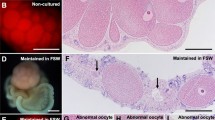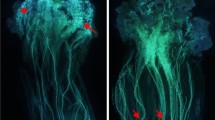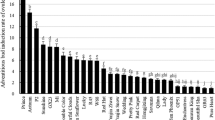Abstract
FRUIT culture, perhaps better termed ovary culture, aims at studying the growth pattern and nutritional requirements of growing ovaries. Two pioneer attempts in this direction were those of Jansen and Bonner1 and Nitsch2,3, but these workers did not follow the changes taking place in the ovules. Recently, Anantaswamy Rau4 reared the ovaries of Phlox in artificial cultures. Although the fruits grew appreciably in all these cases, the extent of growth never equalled that in Nature. The size of the fruits obtained was always much smaller than that of fruits produced in Nature.
This is a preview of subscription content, access via your institution
Access options
Subscribe to this journal
Receive 51 print issues and online access
$199.00 per year
only $3.90 per issue
Buy this article
- Purchase on Springer Link
- Instant access to full article PDF
Prices may be subject to local taxes which are calculated during checkout
Similar content being viewed by others
References
Jansen, L. L., and Bonner, J., Amer. J. Bot., 36, 826 (1949).
Nitsch, J. P., Science, 110, 499 (1949).
Nitsch, J. P., Amer. J. Bot., 38, 566 (1951).
Anantaswamy Rau, M., Phytomorphol., 6, 90 (1956).
White, P. R., “Cultivation of Animal and Plant Cells” (London, 1954).
Author information
Authors and Affiliations
Rights and permissions
About this article
Cite this article
MAHESHWARI, N., LAL, M. In vitro Culture of Ovaries of Iberis amara L.. Nature 181, 631–632 (1958). https://doi.org/10.1038/181631a0
Issue Date:
DOI: https://doi.org/10.1038/181631a0
This article is cited by
Comments
By submitting a comment you agree to abide by our Terms and Community Guidelines. If you find something abusive or that does not comply with our terms or guidelines please flag it as inappropriate.



